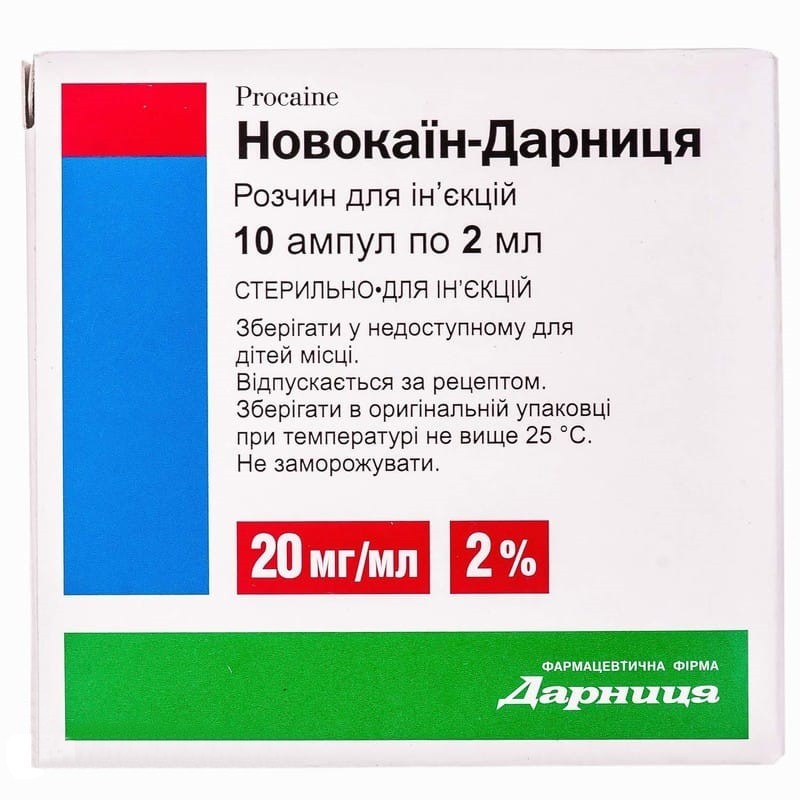



 Secure and encrypted payment processing
Secure and encrypted payment processing We ship to over 40 countries including the USA, UK, Europe, Australia and Japan
We ship to over 40 countries including the USA, UK, Europe, Australia and Japan Guaranteed refund or reship if you haven't received your order
Guaranteed refund or reship if you haven't received your orderNovocaine-darnitsa is a local anesthetic with moderate activity and a wide range of therapeutic effects. the mechanism of anesthetic action is associated with blockage of sodium channels, inhibition of potassium current, competition with calcium, a decrease in the surface tension of the phospholipid membrane layer, inhibition of redox processes and pulse generation. upon entry into the blood, reduces the formation of acetylcholine, reduces the excitability of peripheral cholinergic systems, has a blocking effect on the autonomic ganglia, reduces smooth muscle spasms, and reduces the excitability of the heart muscle and motor zones of the cerebral cortex.
Pharmacokinetics With parenteral administration, it is well absorbed. The degree of absorption depends on the place and route of administration (especially on vascularization and blood flow velocity at the injection site) and the total dose (amount and concentration of solution). It is rapidly hydrolyzed by esterases and cholinesterases of blood plasma and tissues with the formation of two main pharmacologically active metabolites: diethylaminoethanol (has a moderate vasodilating property) and paraaminobenzoic acid (it is a competitive antagonist of sulfonamide chemotherapeutic drugs and can weaken their antimicrobial effect). T½ - 30–50 s, in the neonatal period - 54–114 s. It is allocated mainly by kidneys in the form of metabolites (80%); in unchanged form, no more than 2% is excreted. Poorly absorbed through the mucous membranes.
Conduction, epidural and spinal anesthesia in surgery, urology, ophthalmology, dentistry, otorhinolaryngology, blockade of peripheral nerves and plexuses.
The dose of the drug usually depends on the type of anesthesia, the degree of vascularization of the tissues, the required depth and duration of anesthesia, as well as on the individual characteristics of the patient. the lowest effective dose should be administered.
Recommended Dosage:
| Type of anesthesia | Procaine hydrochloride | ||
|---|---|---|---|
| The concentration of the solution,% | Volume of solution, ml | Total dose
procaine, mg |
|
| Mandibular | 2 | 2–3 | 40–60 |
| Infraorbital | 2 | 0,5–1 | 10–20 |
| Anesthesia of fingers (without epinephrine) | 1* | 3–4 | 30–40 |
| Paracervical (as a slow 5-minute injection) | 1* | 3 (to each of 4 sites) | 80–120 |
* To obtain 1% solution of procaine, sterile 0.9% sodium chloride solution should be used.
To conduct caudal and lumbar epidural blockade, 15–25 ml of 2% solution should be administered. The maximum volume of a single injection should not exceed 25 ml. Repeated doses, which are usually 2-6 ml lower than the initial dose, should be administered at intervals of 40-50 minutes.
Maximum single dose for adults